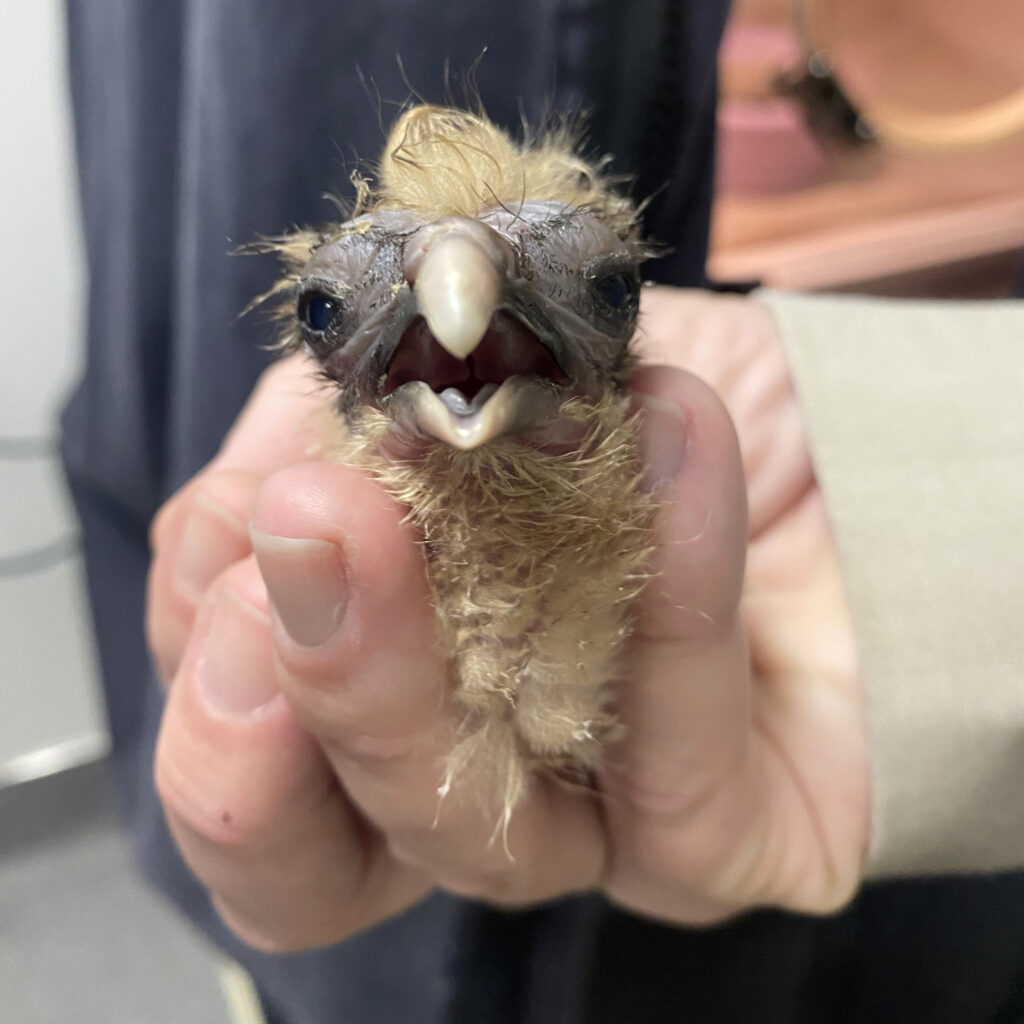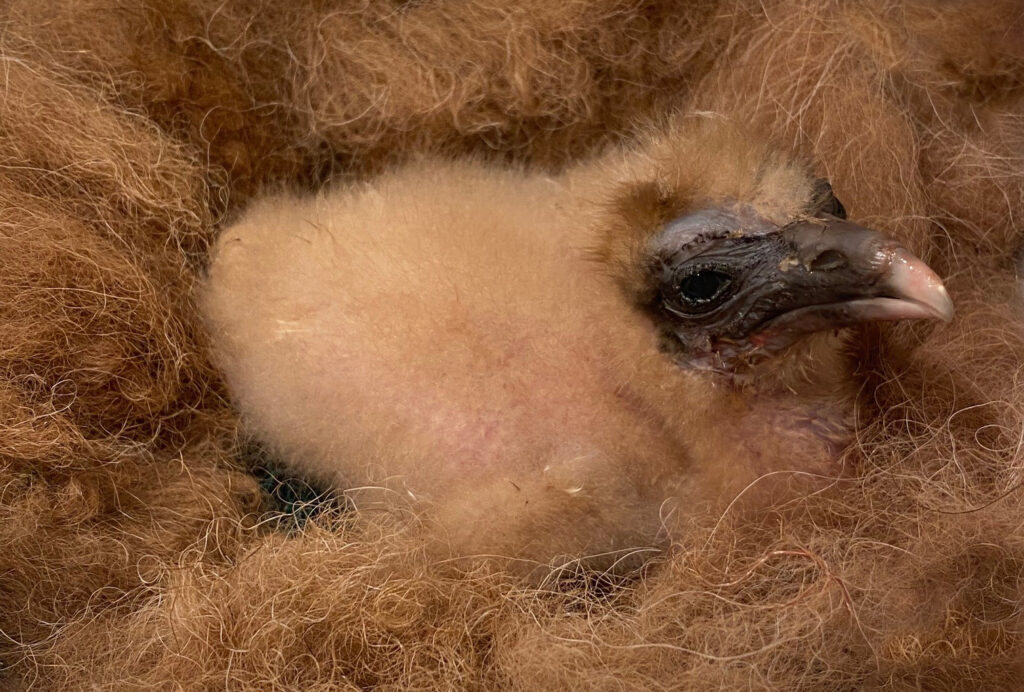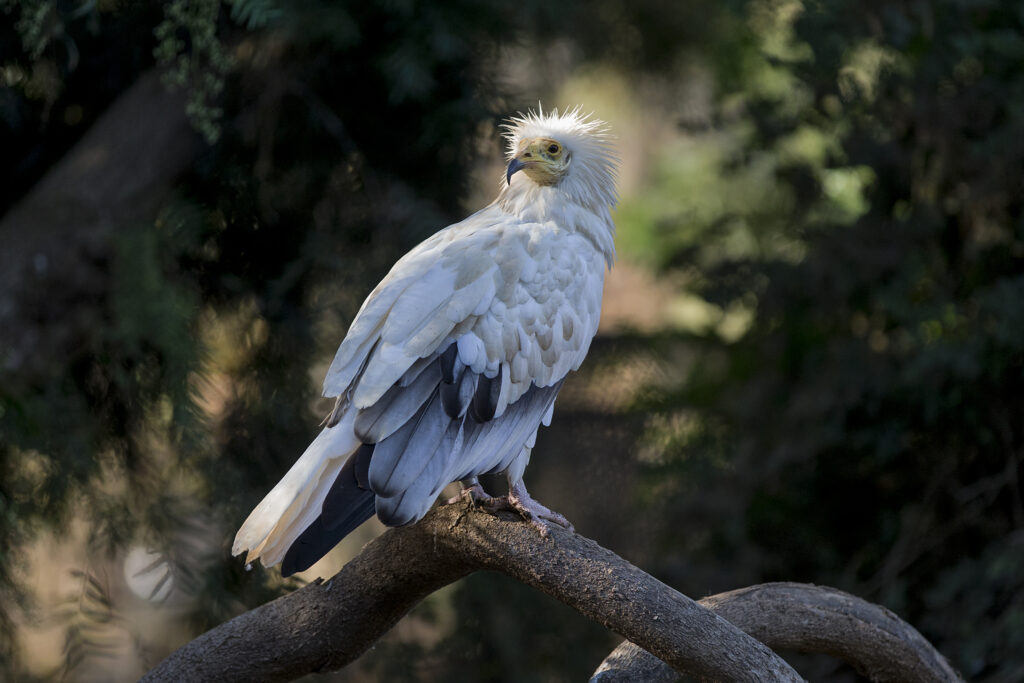
Every year, the condor care specialists at the San Diego Zoo Safari Park expertly raise critically endangered California condor chicks. Over the years, we have applied our decades of experience to many of their endangered African counterparts.
Most of the California condors Gymnogyps californianus are raised by their parents under our watchful eye, but in those few cases where the birds’ parenting ability is in question, we hand-rear chicks. Our methods ensure that each bird is raised in a way that sets it up for success and eventual introduction to its native habitat. Applying our experience to many of their African counterparts, we have successfully raised Cape vultures Gyps coprotheres, Rüppell’s vultures Gyps rueppelli, hooded vultures Necrosyrtes monachus, and lappet-faced vultures Torgos tracheliotos. All these species face challenges in their native habitat, and it is so exciting to help contribute to their overall success.
We are home to just one more African vulture species here at the Park that we hadn’t had the opportunity to raise, but after years of hard work by our entire team of wildlife care specialists, this was the year! We are excited to announce the hatch of the very first Egyptian vulture Neophron percnopterus in the history of San Diego Zoo Wildlife Alliance! This very special little vulture hatched on June 11, 2021, and that’s when the fun started for us.

Due to the importance of this little chick and the inexperience of its parents, our expert vulture conservation team decided hand-rearing it would increase the chances of its survival. Although we have a lot of experience rearing vultures here, this chick was going to be different. Egyptian vultures are much smaller than most of the other species we’ve raised, and they have different requirements. Plus, no one else in the country is raising this incredibly rare species. After much research into nests and parent behaviors observed in their native habitat, we decided on the best strategy for raising a healthy Egyptian vulture chick.
Unlike those of most African vultures, Egyptian vulture nests are minimally built, consisting mainly of sand and mammal fur. Luckily, we had an ample supply, thanks to our wildlife care specialists and our two Bactrian camels, Mouse and Eli. We were able to snuggle our new baby (a girl) into a cozy nest of camel fur every day.

Puppet feeding is a strategy we use to ensure that chicks don’t associate us with food. We developed the puppets to allow us to keep out of sight to avoid the chicks imprinting on humans. At first, our Egyptian vulture chick wasn’t quite big enough for us to introduce our condor puppet, so we fed her small items of food with tweezers and with our hands disguised. As she grew, so did her food items, and once she was able to pick things up on her own, she got to meet her condor puppet foster parent. She spent the first 30 days of her life in a nice warm chick brooder, where she slowly gained the ability to regulate her body temperature. She grew fast, and before we knew it, she was ready to graduate to an enclosed outdoor pen. She spends her days basking in natural sunlight, organizing and reorganizing sticks and small rocks around her nest, and watching with great fascination a nearby pair of Andean condors Vultur gryphus.
We are proud to report that our Egyptian vulture chick—named Jamila (Arabic for “beautiful”)—has grown into a beautiful and perfectly feisty bird. She’ll soon move on to her next adventure, living near her parents, so she can continue her education in becoming a contributing member of her species. And hopefully, someday Jamila will be paired with a mate of her own. It was an honor to have the opportunity to raise her. We can’t wait to see how she continues to grow, and we are so excited to have been a piece of the story in the hopeful recovery of the Egyptian vulture.

Erin Massey is a senior wildlife care specialist at the San Diego Zoo Safari Park.




